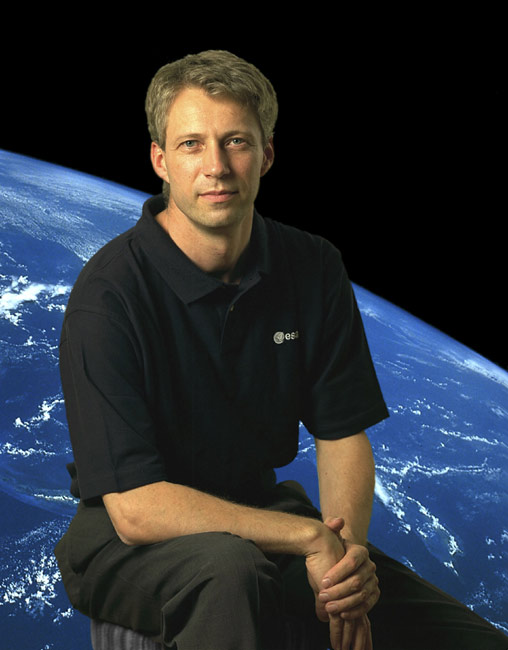Shuttle Flight Delays Complicate European ISS Plans

TheEuropean Space Agency (ESA) is hoping to minimize the impact NASA's decision todelay its next shuttle flight will have on the organization's plans for theInternational Space Station (ISS).
ESA isbanking on NASA's launch of its STS-121 shuttle mission--delayedfrom September to no earlier than March 2006--to deliver Thomas Reiter on a six-month-longmission to the ISS, the longest stay of its kind for an ESA astronaut.
BeforeSTS-121's delay, Reiter was slated to spend much of his ISS increment with thecrew of Expedition12, commanded by NASA astronaut Bill McArthur with cosmonaut Valery Tokarevserving as flight engineer. They are set to launch on Sept. 30. Reiter's arrivalon-station will bring the ISS back to its three-person complement for the firsttime since the 2003 Columbia disaster.
"Our plansat the present for Thomas Reiter are still to launch him on [STS-121] and toreturn him on [STS-116]," said Alan Thirkettle, ESA's Head of Development forthe Directorate of Human Spaceflight, in an e-mail interview. "The resolutionof the [external tank] problems has to first be achieved and a firm launch dateestablished before any plans can be cast in concrete."
NASAengineers are still working to solve an external tank foam shedding problemdetected during Discovery's STS-114flight. That work will likely prompt repairs or modifications to shuttle externaltanks, NASA associate administrator for space operations Bill Gerstenmaier saidlast week.
Meanwhile,ISS officials are developing plans to complete construction on the spacestation - which relies on NASA shuttles to deliver large components - beforethe U.S. space agency retires its three remaining orbiters in 2010.
"Ourplanning is to use the shuttle fleet...to essentially complete the assembly ofthe space station in the years that we have remaining," NASA chief MichaelGriffin told reporters last week.
Breaking space news, the latest updates on rocket launches, skywatching events and more!
ISSastronaut shuffle
WhileExpedition 12's McArthur and Tokarev hoped Reiterwould greet them at the ISS - a September launch would have placed him onboardbefore the station astronauts arrived - the ESA astronaut will likely spendmost of his time with their Expedition 13 successors.
"If we'retargeting March [for the shuttle launch], he would arrive onboard just beforeExpedition 13," said Kylie Clem, a NASA spokesperson at the agency's JohnsonSpace Center (JSC), adding that Reiter would spend a few weeks with theExpedition 12 astronauts before the end of their increment.
Expedition13 is slated to launch in the mid-March 2006, NASA officials said.
Withshuttle flights grounded between the Columbia accident and Discovery's STS-114flight, the space station relied on Russia's Soyuz and unmanned Progressspacecraft to deliver new crews and cargo.
ESA is alsoplanning to launch its first unmanned cargo ship to the space station, the AutonomousTransfer Vehicle (ATV) Jules Verne, in 2006.
"The futureof ATV as an ISS logistics carrier becomes ever more important with thepossible reduction of [shuttle] flights," Thirkettle said.
Futurestation construction
ESAofficials said they are working to at least minimize the effects of NASA'sshuttle delays on their hardwarecontributions to the ISS.
"Inprinciple, the launch dates for the European ISS elements will be delayed as aconsequence of the delay to the next shuttle flight," Thirkettle said. "But weare in discussion with NASA to see if there are ways of mitigating thesedelays."
How thatmay be done, however, remains unclear.
ESA's majorpiece of ISS hardware, the billion-dollar Columbus module, cannot fly untilNASA delivers Node 2 - the module's station attachment port - to the orbitallaboratory during the planned STS-120, ESA officials said.
The STS-120flight, however, must wait until after a series of missions to add new solararrays, batters and trusses to the ISS that begin with the launch of STS-115aboard Atlantis, according to NASA's current shuttle flight plans. Node 2'sarrival would mark the completion point for U.S. components, with Columbus slated to launch three flights later.
"Our priority is for the launch of Columbus, and therefore ofNode 2 to which Columbus is attached," Thirkettle said. "Then for theestablishment of a 6-person permanent ISS crew, to ensure the full utilizationof Columbus and thus the full scientific return on the investment we have madein the ISS program."

Tariq is the award-winning Editor-in-Chief of Space.com and joined the team in 2001. He covers human spaceflight, as well as skywatching and entertainment. He became Space.com's Editor-in-Chief in 2019. Before joining Space.com, Tariq was a staff reporter for The Los Angeles Times covering education and city beats in La Habra, Fullerton and Huntington Beach. He's a recipient of the 2022 Harry Kolcum Award for excellence in space reporting and the 2025 Space Pioneer Award from the National Space Society. He is an Eagle Scout and Space Camp alum with journalism degrees from the USC and NYU. You can find Tariq at Space.com and as the co-host to the This Week In Space podcast on the TWiT network. To see his latest project, you can follow Tariq on Twitter @tariqjmalik.
